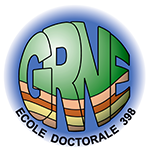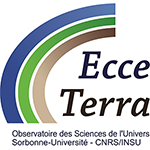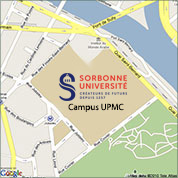Séminaire ISTeP - Yael Sagy
(Tel Aviv)
Evolution of mesoscale structures in the Levant basin, Eastern Mediterranean: geophysical analysis and tectonic implications
Recent giant gas discoveries within deeply buried structural highs in the middle of the Levant basin have attracted the attention of the industrial and academic communities striving to understand the origin of these structures, their relations with the tectonic history of the basin, and their evolution through time. The location of the Levant basin, at the conjunction of two plate boundaries separating the African Plate from Eurasia in the north and from Arabia in the east, further questions the relationship between the deformation in the basin and the regional plate tectonic processes. In particular: what is the origin of the deeply buried structures in the basin? Are they related to the Early Mesozoic rifting or to the Late Mesozoic – Early Tertiary Africa-Eurasia convergent phase? How are the structures in the basin related to the closure of the Tethys Ocean, to the onshore Syrian Arc fold belt (~1000 km – long fold belt extending from northern Egypt through Israel to Syria), and to the Dead Sea transform?
Basin-wide interpretation was carried on 27,000 km of 2D time-migrated seismic lines, and re-processing of five regional lines using the Pre-Stack Depth Migration procedure yield depth sections. Based on this huge database, the entire section was interpreted, fault related structures were defined and the tectonic evolution of the different structures was analyzed.
The first part of the talk will focus on a unique structural high - “Jonah” located in the center of the basin, tracking its origin and evolution. We demonstrate how Pre-Stack Depth Migration significantly improve the seismic imaging and enable to identify the structure origin and to follow its evolution. We further presents gravity and magnetic modeling that access the seismic interpretation. The second part will present a wider analysis of 72 folds that are related to the Syrian Arc folds. We will show that strain orientation in this area is almost constant for 80 m.y. although plate border configuration dramatically changed. We will discuss this unusual observation in the context of regional plate tectonics.
12/05/2017, Salle Fourcade à 12h30
Egalement dans la rubrique
- Séminaire ISTeP - Tatsuhiko Kawamoto
- Séminaire ISTeP - Boris Chauviré
- Séminaire ISTeP - Jacques Bourgois
- Séminaire ISTeP - Michael Hermoso
- Séminaire ISTeP - Alexis Nutz
- Séminaire ISTeP - Marta Gasparrini
- Séminaire ISTeP - Chloé Loury
- Séimnaire ISTeP - Silvio Ferrero
- Séminaire ISTeP - Simon Andrieu
- Séminaire ISTeP - Johan Le Goff
- Séminaire ISTeP - Benjamin Bruneau
- Séminaire ISTeP - Amandine Prelat
- Séminaire ISTeP - Kevin Mahan
- Séminaire ISTeP - Damien Do Couto
- Séminaire ISTeP - Silvia Omodeo Salé
- Séminaire ISTeP - Céline Ducassou
- Séminaire ISTeP - Jean Nizou
- Séminaire ISTeP - Charlotte Ribes
- Séminaire ISTeP - Yohann Poprawski
- Séminaire ISTeP - Diane Bonnemains
- Séminaire ISTeP - Muriel Laubier
Chiffres clés (Mars 2025)
L'ISTeP comprend 131 membres dont :
Permanents (66)
- Professeurs : 17 (+2 PAST)
- Maîtres de conférence : 26
- Directeurs de recherche CNRS : 1
- Chargés de recherche CNRS : 1
- ITA : 19
Personnels non permanents (65)
- Collaborateurs bénévoles / émérites : 17
- Chaire de professeur junior : 1
- Enseignants-chercheurs contractuel : 2
- 1 MCF accueil en délégation
- ATER et Post-Docs : 9
- Doctorants : 32
- ITA-BIATSS : 3





